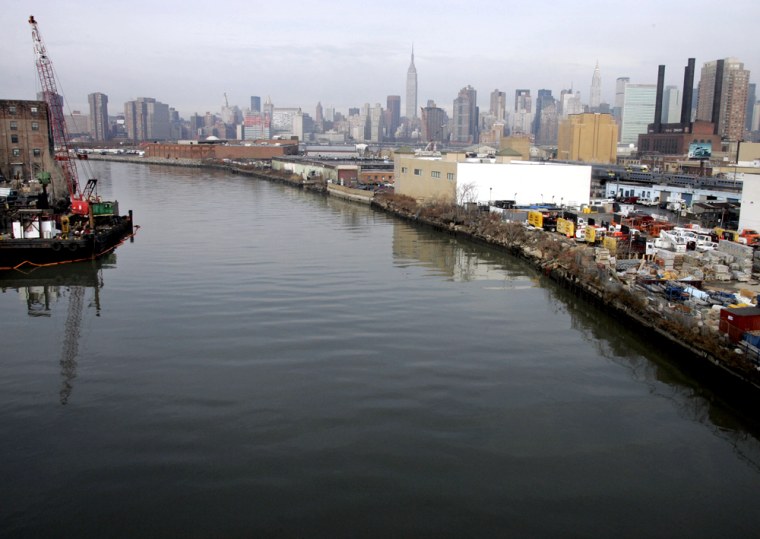International Olympic Committee members visit New York next week to judge the city’s bid for the 2012 Games but they’re in for a surprise: In a creek next to the proposed Olympic Village is a half-century-old, 17-million-gallon oil spill.
The festering brew — half again as big as 1989’s Exxon Valdez disaster — is an underground cesspool of gasoline, diesel and heating oil that seeps into Newtown Creek, a waterway that hugs Hunter’s Point, where 16,000 athletes and coaches would live and train should New York win its bid to host the Olympics. The neighborhood in the city’s borough of Queens is almost directly across the East River from midtown Manhattan.
The 13-member IOC Evaluation Committee arrives on Sunday on a fact-finding tour of proposed sites that Deputy Mayor Daniel Doctoroff, founder of NYC2012, the organization advocating the city’s bid, described as critical to New York’s chances.
New York is competing against Paris, London, Moscow and Madrid for the 2012 Olympics. The IOC decides in July.
The toxic state of the waterway is likely to come up, given the committee’s assessment of the environmental impact of any bid.
Neighbors sued ExxonMobil
“You have to smell it for yourself,” said Teresa Toro, who lives two blocks from the polluted creek.
“The fumes are unbelievable,” Toro said. She is one of the plaintiffs in a lawsuit filed last year against ExxonMobil Corp., the corporate descendant of John D. Rockefeller’s Standard Oil, whose refineries lined Newtown Creek since 1875 along with other industrial firms.
Mobil, without admitting any fault for the spill, signed a consent agreement with the city Department of Environmental Protection in 1990 to begin a clean-up, which litigants charge has been inadequate.
The problem erupted on Oct. 5, 1950, when after years of leaks into nearby sewers, the build-up caused a huge explosion heard more than a mile away, blasting manhole covers three stories high and shattering hundreds of windows.
Newspaper accounts said terrified residents shouted, “Atom bomb!”
Despite the drama, the spill went largely ignored until 1978 when a Coast Guard helicopter on patrol spotted the sheen of an oil slick on Newtown Creek.
Today, the underground spill is 25-feet thick and in some places just inches beneath the surface.
'Heart of darkness'
Environmental group Riverkeeper, another plaintiff in the suit, says dangerous vapors pose a health hazard.
“A boat trip up the creek is a journey into the heart of darkness, with the backdrop of the Manhattan skyline as a reminder of its real world locale,” said Basil Seggos, Riverkeeper’s chief litigator.
The Department of Health reports the area’s asthma, emphysema and bronchitis rates are 25 percent higher than in the rest of the city.
Low levels of exposure to benzene, a component in gasoline, can cause memory loss and seizures, and high levels can cause cancer and death, the U.S. Environmental Protection Agency says.
24,000 gallons a month removed
“It’s clearly an issue that we’re well aware of,” said Jay Kriegel, executive director of NYC2012. “It’s an environmental situation that is being dealt with, but if we get the Olympics it would become a major priority and there would be an aggressive program to accelerate action.”
Jennifer Rommel, state Department of Environmental Conservation project manager for the clean-up, said Exxon Mobil is removing about 24,000 gallons a month. “It’s a huge priority, but this is one of 900 projects. We do what we can.”
Cities in the past have used the Olympics as a vehicle to clean up toxic sites, such as Sydney in 2000 where the Olympic Village was sited on polluted Homebush Bay.
“The Olympics is a useful tool,” said Andrew Winters of NYC2012. “International attention will get government moving.”
